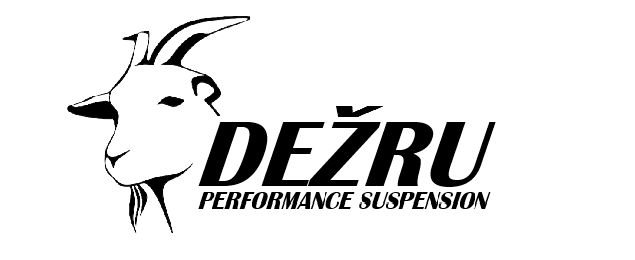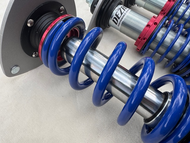Dežru Spec-S Inverted shocks - explained (simply)
Posted by Dežru Performance Suspension on Aug 28th 2025
Inverted shocks, also called “upside-down” dampers, are a design where the shock body is mounted at the top and the shaft is fixed at the bottom, opposite of a conventional upright shock. Instead of the piston rod moving in and out of the body, the entire shock body moves relative to a fixed shaft. This design was originally developed for motorsport, where durability and precise handling are critical, but has since made its way into performance street and enthusiast applications.
The biggest advantage of an inverted shock is strength and rigidity. Because the larger-diameter shock body is attached to the chassis rather than the smaller-diameter piston rod, the assembly resists flex under cornering and braking loads. This makes the suspension feel more precise, particularly during spirited driving where sharp turn-in, high lateral forces, and quick weight transfers demand stability. The thicker shaft in an inverted setup also better withstands side loading, which is common in strut-type suspensions, reducing wear on internal bushings and seals.
Another benefit is heat management and durability. With inverted shocks, the oil and gas chamber is located farther away from the heat of the brakes and wheel wells, which helps maintain consistent damping and reduces the risk of fade. The exposed shaft is also positioned at the bottom, closer to the road, but because it is much thicker and more robust than a standard piston rod, it is less susceptible to bending or damage. For daily driving, this translates into longer shock life and greater reliability, while for spirited use it ensures performance stays consistent lap after lap or pass after pass on a mountain road.
Compared to a normal upright shock, an inverted shock offers a more direct, confidence-inspiring feel with improved chassis feedback, while still being suitable for street use. The additional stiffness and resistance to flex make the car feel more planted, and the added durability means the suspension can take harder use without wearing out prematurely. For drivers who want the blend of daily usability and true motorsport-derived performance, inverted shocks are often the superior choice.

